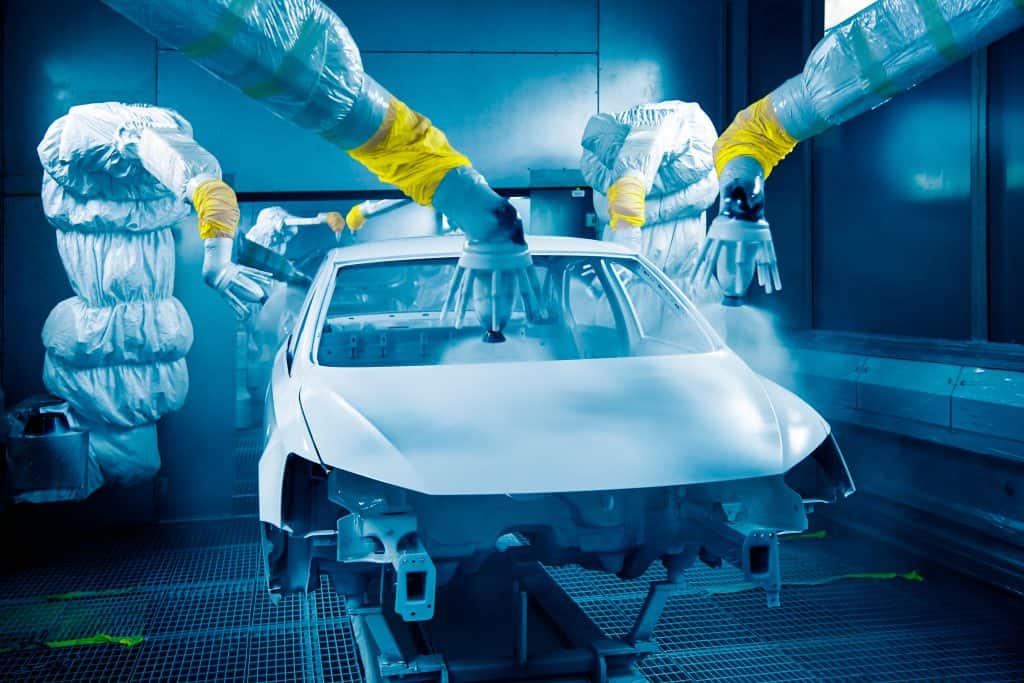
How to Paint a Car: Step-by-Step Guide for Beginners
Share
Paining a car can be an exciting venture for tech professionals and enthusiasts alike. Not only does it allow for personalization and creativity, but it also tests your skills and knowledge in various technical aspects. In this article, we will explore how to paint a car, covering the steps, tools required, and tips to ensure a flawless finish.

Why Should You Paint Your Car?
Whether you're looking to refresh your vehicle's appearance, fix scratches and blemishes, or completely change the color, knowing how to paint a car empowers you to increase its aesthetic and resale value. Plus, its a great way to express individuality.
As a tech professional, you'll appreciate the precision and attention to detail required in this process. With the right tools and techniques, you can achieve results comparable to a professional spray shop without breaking the bank.
Essential Tools and Materials
Before diving into the painting process, its crucial to gather the necessary tools and materials. Heres a list:
- Spray Gun: Invest in a high-quality spray gun for an even application.
- Compressor: A reliable air compressor to power your spray gun.
- Sandpaper: Various grits for prepping and smoothing surfaces.
- Primer: Essential for adhesion and to create a smooth surface for the paint.
- Automotive Paint: Choose a color and type that suits your needs.
- Clear Coat: To protect the paint job.
- Masking Tape and Paper: For protecting areas of the car you do not want to paint.
Preparing Your Vehicle for Painting
The preparation phase is perhaps the most critical part of the painting process. Properly preparing your car not only ensures a better finish but also extends the lifespan of the paint job. Here are the key steps:
1. Clean the Surface
Start by thoroughly cleaning the car. Use soap and water to remove dirt and grease, and then allow it to dry completely. A clean surface is essential for paint adhesion.
2. Sanding
Next, use sandpaper to remove the old paint and any imperfections. Start with a coarse grit and gradually move to a finer grit for a smooth finish.
3. Apply Primer
Applying a primer is crucial. It serves as the base layer and helps the paint adhere better. Make sure to use an appropriate primer for automotive use.
Painting Techniques: Step-by-Step
Now that your car is prepped, its time to dive into the actual painting. Follow these steps:
1. Masking
Use masking tape and paper to cover areas that should not be painted, such as windows, tires, and chrome trim. This ensures clean lines and prevents overspray.
2. Mixing the Paint
Prepare your paint according to the manufacturer's recommendations. It might require mixing with a reducer or hardener to achieve the right consistency.
3. Test Spray
Before applying paint to your car, do a test spray on a piece of cardboard. This will help you get a feel for the spray pattern and adjust the settings on your spray gun if needed.
4. Start Painting
Begin painting by applying thin, even coats. Hold the spray gun at a consistent distance from the surface and maintain a steady motion to avoid drips. Allow each coat to dry before applying the next one.
5. Apply Clear Coat
Once the desired color is achieved, apply a clear coat for protection. This step is essential to give your paint job a glossy finish.
Post-Painting Tips
After the paint job is finished, follow these tips for maintenance and care:
1. Wait to Wash
Allow your car's paint to cure thoroughly before washing it. This can take up to several weeks, depending on the paint used.
2. Avoid Direct Sunlight
Keep your vehicle out of direct sunlight during the curing process as UV rays can damage the fresh paint.
3. Regular Waxing
Use a quality wax to protect your paint and maintain its shine. Regular waxing can help extend the life of your paint job.
Additional Resources
For more detailed guidance, you can refer to this helpful resource on how to paint a car. You can also learn how to utilize tools like a multimeter in automotive applications, which could greatly improve your efficiency by checking out this article about using a multimeter.

FAQs about Car Painting
1. How do I choose the right paint for my car?
Choosing the right paint depends on your desired finish and the car's material. Always opt for high-quality automotive paint.
2. Can I paint my car without a spray gun?
While it's possible to use brushes, a spray gun will provide a much smoother finish.
3. How long does it take to paint a car?
The duration of a car painting job varies but typically takes several hours for preparation and application, with additional time for drying and curing.
